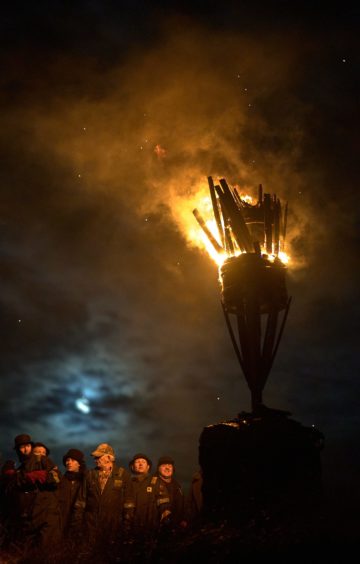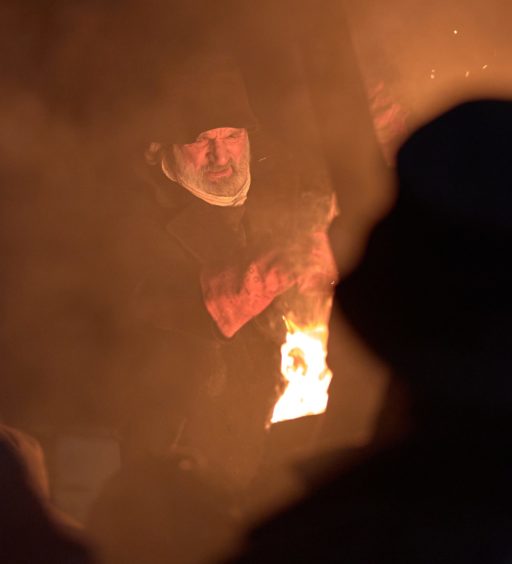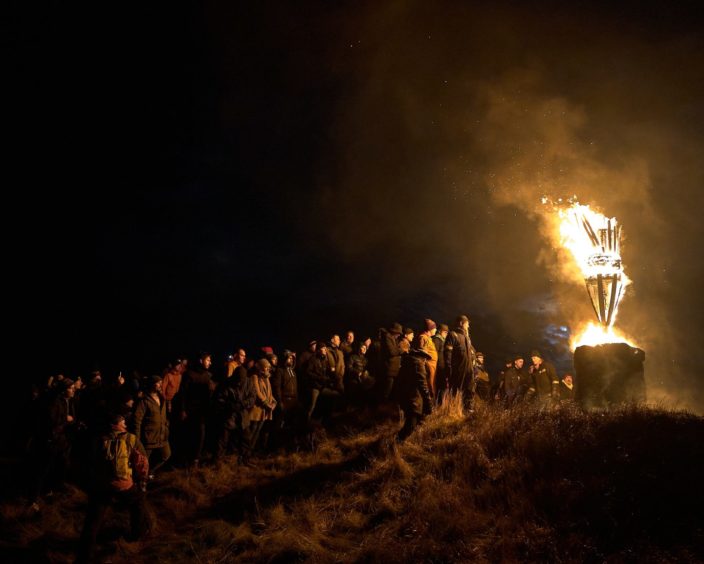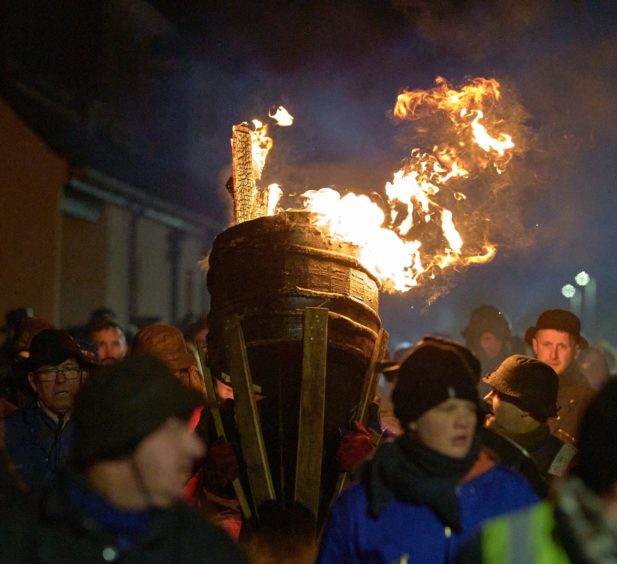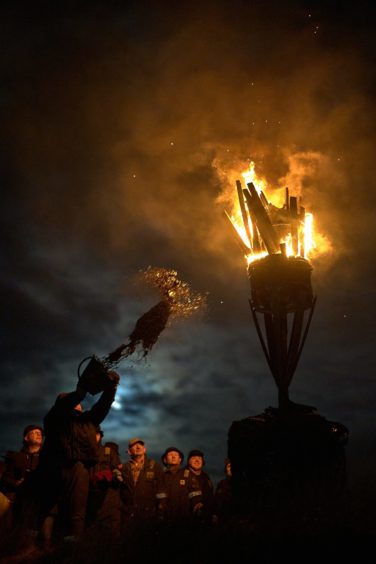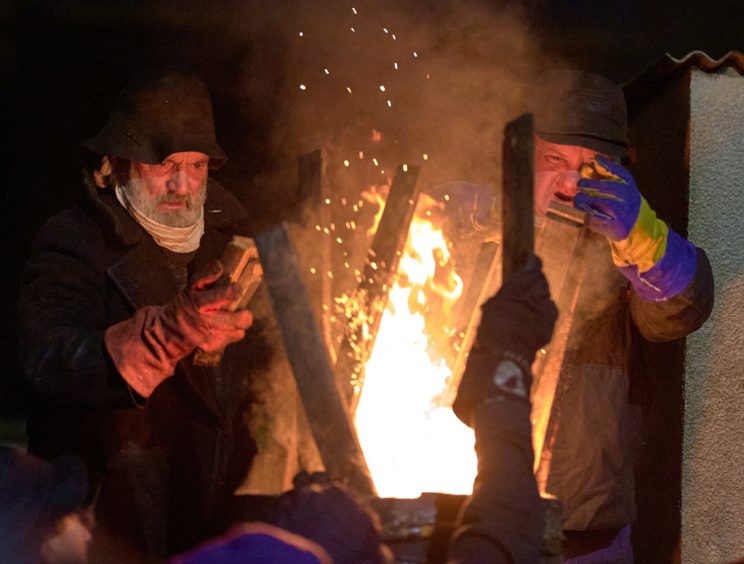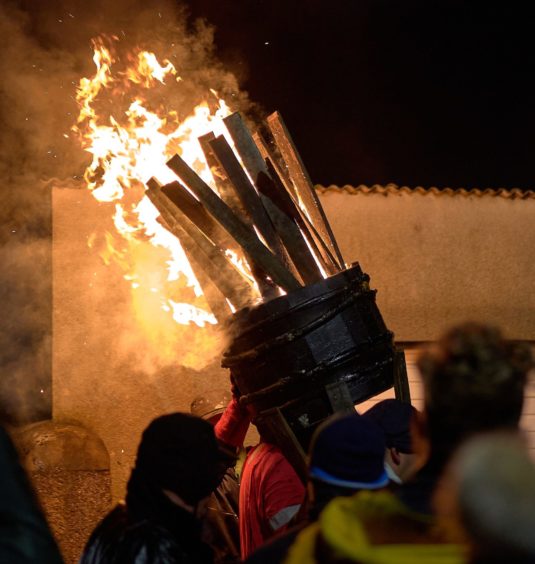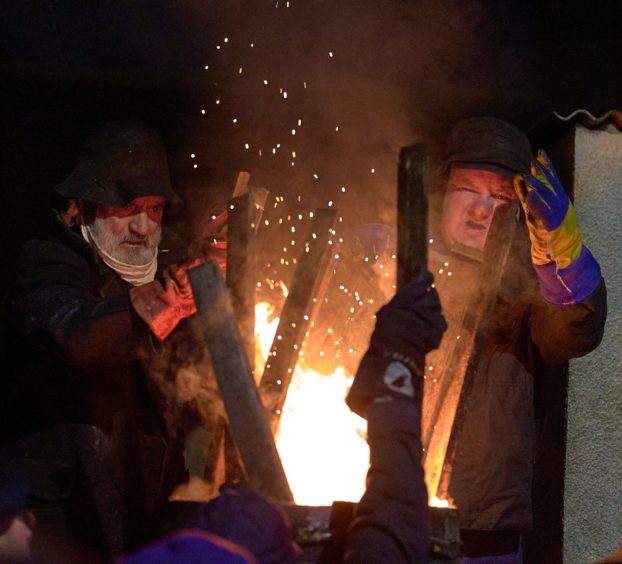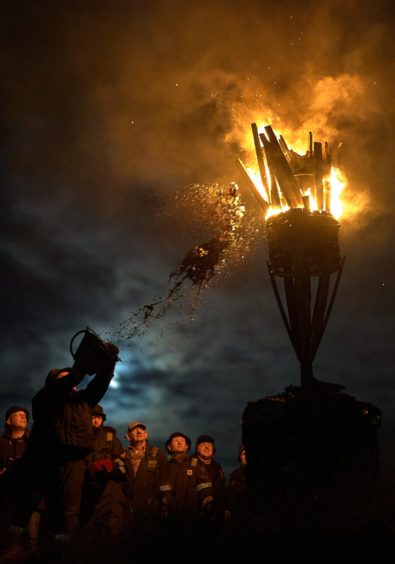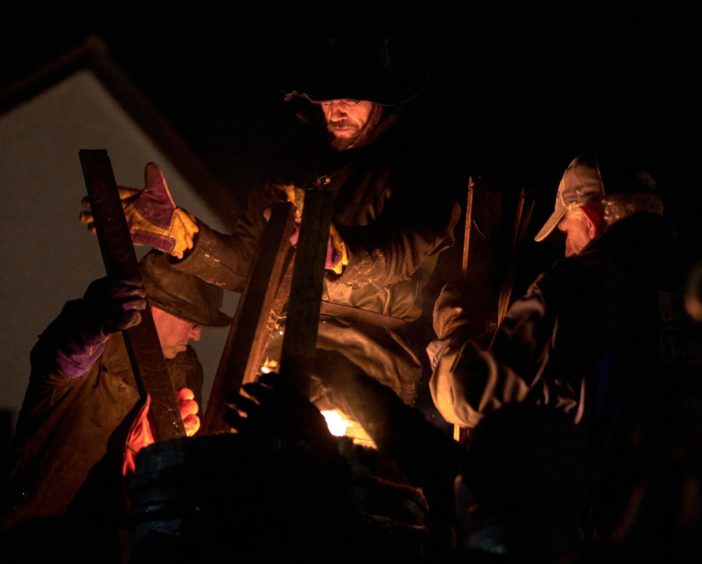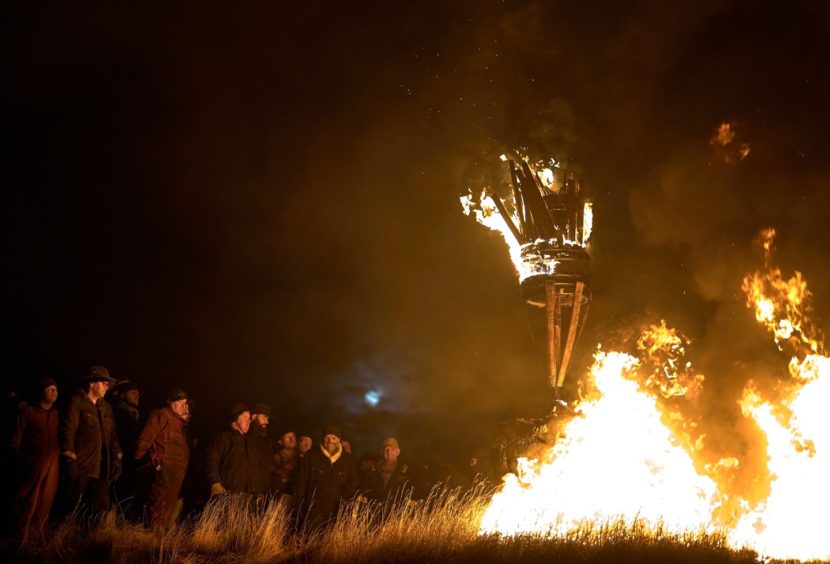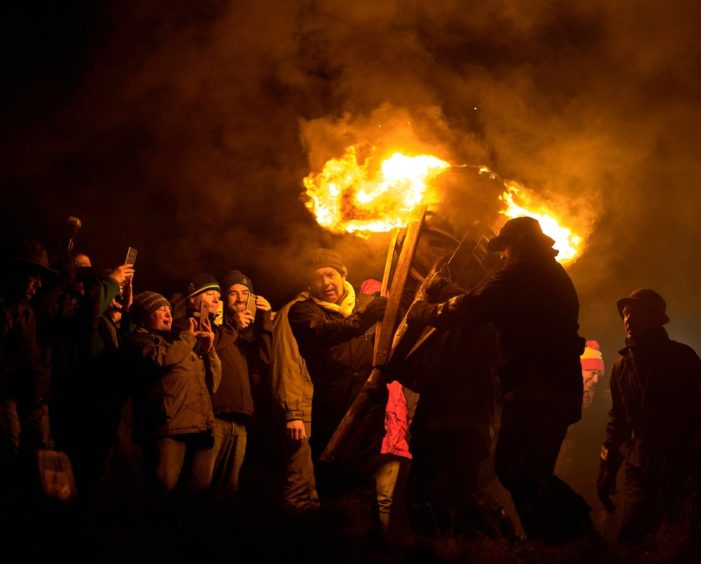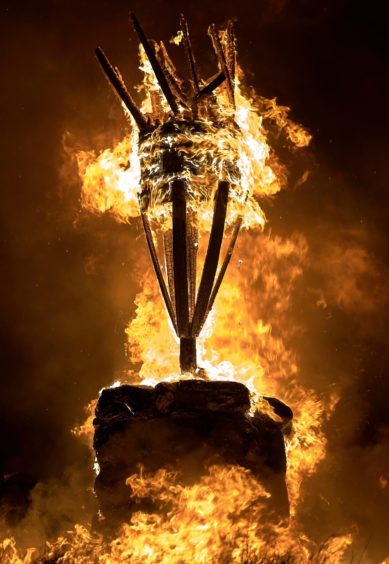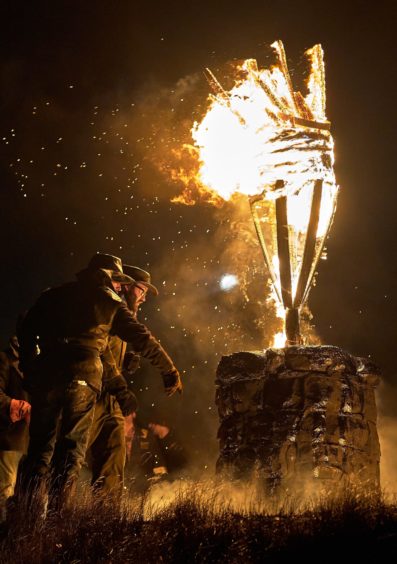Fierce flames reached high into the night sky as a Moray community celebrated the dawn of the ancient New Year with a centuries-old tradition.
Clavie night has been celebrated for longer than living memory or documented history stretches – its exact origins lost to time.
But its mystique only added to the intrigue as thousands packed the streets of the village as visitors from across the globe stood alongside native Brochers.
Large crowds gathered to witness the first flames emerge from the Clavie, a burning 100kg barrel packed with wooden staves and tar.
No matches are used to spark the celebrations. Instead, smouldering peat is brought through the gathering to begin the procession that has ignored modern trappings to preserve traditions passed down through generations.
Clavie crew members shouted “make way for the peat” as they made their way to the wall of the old manse before cheers of “hip hip” welcomed the first flames of the New Year.
Hundreds joined the procession through the village on Saturday, with the barrel passed between native crew members comprised from families who have lived locally for generations.
Charred staves were tossed on the way to pubs and gardens – a tradition said to bring good luck for the year.
Soon the centrepiece was hoisted to the summit of Doorie Hill, once the site of a massive Pictish fort believed to date back more than 1,600 years, where huge crowds had already gathered to watch the Clavie’s arrival.
There it stood like a beacon visible along the Moray Firth coast with the night sky already lit by a near full moon.
Crew members took it in turns to throw tubs of creosote on to the fire with each turn leading to ever-more intense flames.
More cries of “hip hip” preceded each burst of light with crowds gathered on the hill not afraid to stand within feet of the inferno.
Within 30 minutes the stack, which was constructed by crew members earlier in the day, could withstand the heat no more and gave way to send the barrel crashing to the ground.
Spectators then clambered to grab their own piece of the Clavie to secure good luck for the coming year.
Julie Good, who is visiting Scotland from Kansas in the US, clutched her piece of charred wood in a damp cloth and said: “It’s amazing to see all the tradition. You can imagine this is how it has always been.
“It was the perfect night for it with the full moon.”
Children who travelled from Fife crafted their own special banner for the night featuring a drawing of the Clavie ablaze.
And Andrew Thompson, who travelled from Perth for the spectacle, said: “I’ve known about it for years but it’s only now that I’ve managed to attend. It’s something else to see it with your own eyes.”
THE HISTORY
The exact origins of the ceremonial Burning of the Clavie in Burghead is not known.
The mile-long peninsula the village now stands upon was once the site of a massive Pictish fort three times the size of any other known about in Scotland.
It is believed the tradition may stretch back to the days of the settlement, which has ruins dating back to the late 3rd Century.
What is known is that barrel burning and fire festivals were once common along the Moray Firth coast.
But when the rest of the country switched New Year celebrations to Hogmanay in the 18th Century, Brochers resisted and continued to hold their own celebrations by the ancient Julian calendar, which was created by the Romans, on what is now January 11.
Clavie King Dan Ralph, who has led the event since 1988, said: “The night symbolises an ancient tradition about which we know little. Nothing is written down about it.
“We know Burghead was a very important place for the Pictish navy. The Vikings made a few unsuccessful attempts to capture it before finally taking the fort over.
“The Vikings have a history of having fire festivals but it may well come from the Picts.
“It’s at the time of year when the days are becoming a bit longer in the morning and at night.
“Putting them together signals the sun is coming back and was perhaps a way of celebrating the return of spring.”
